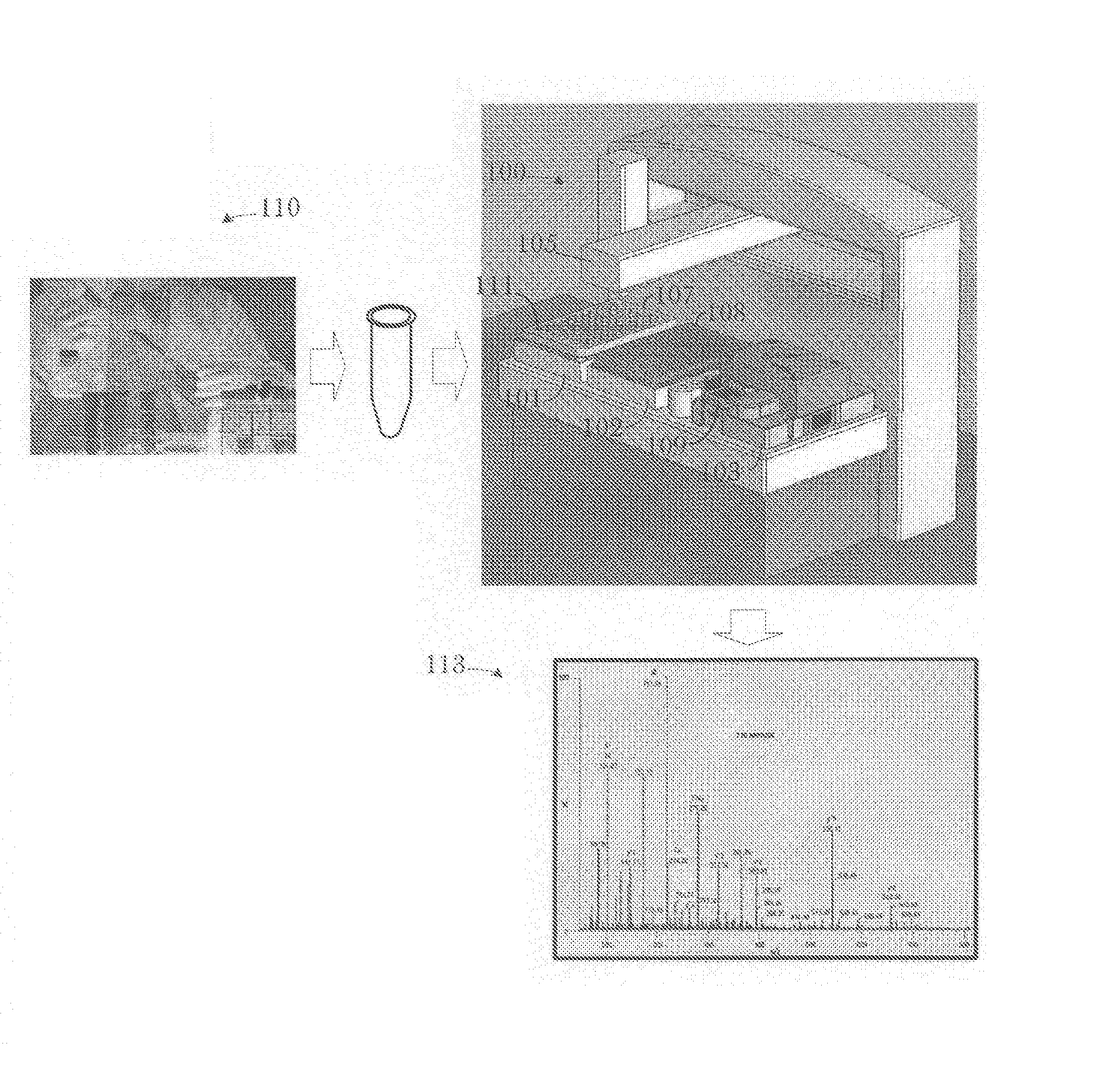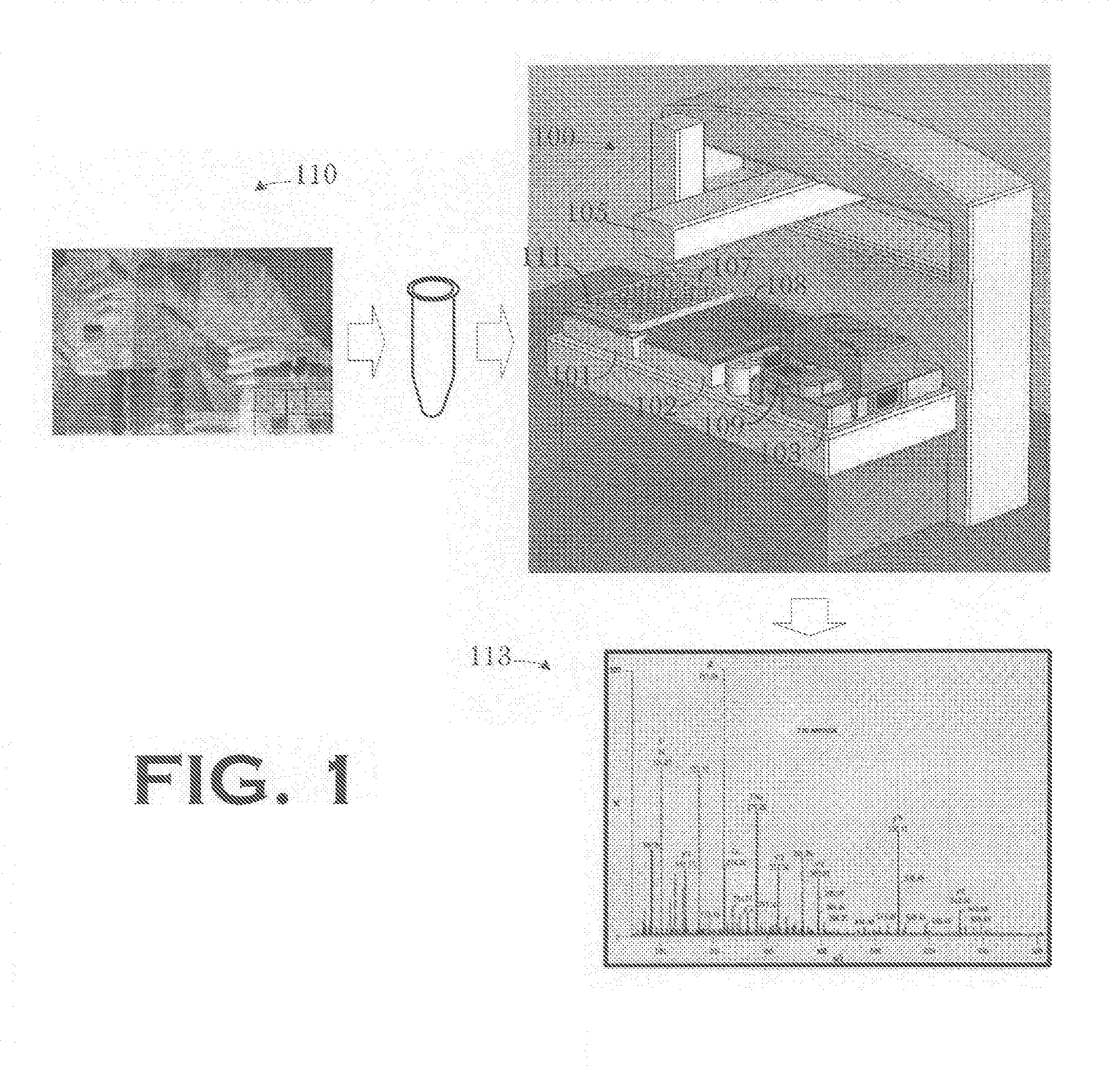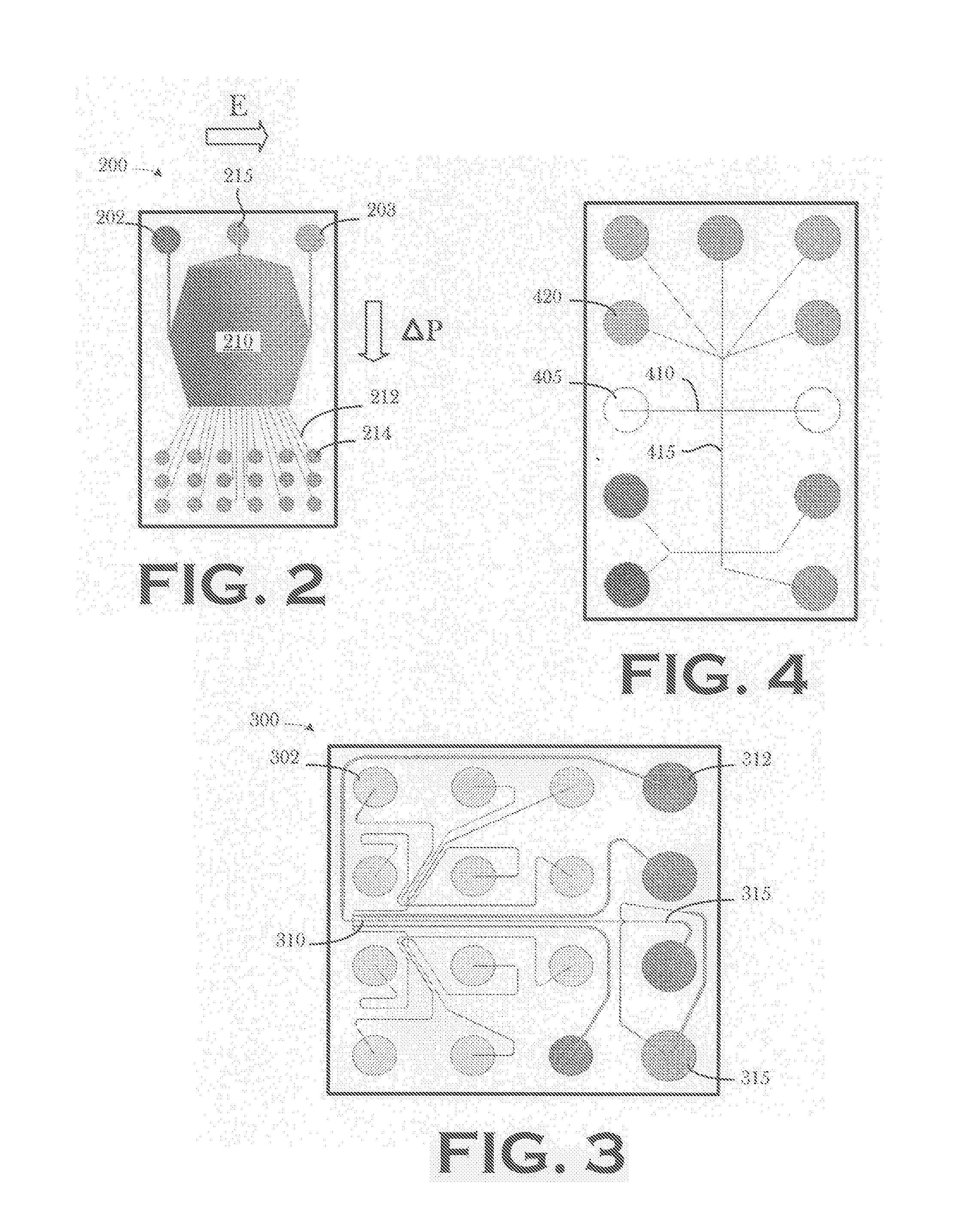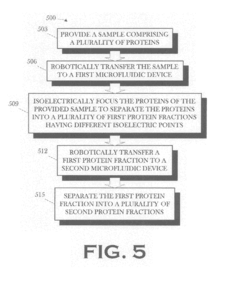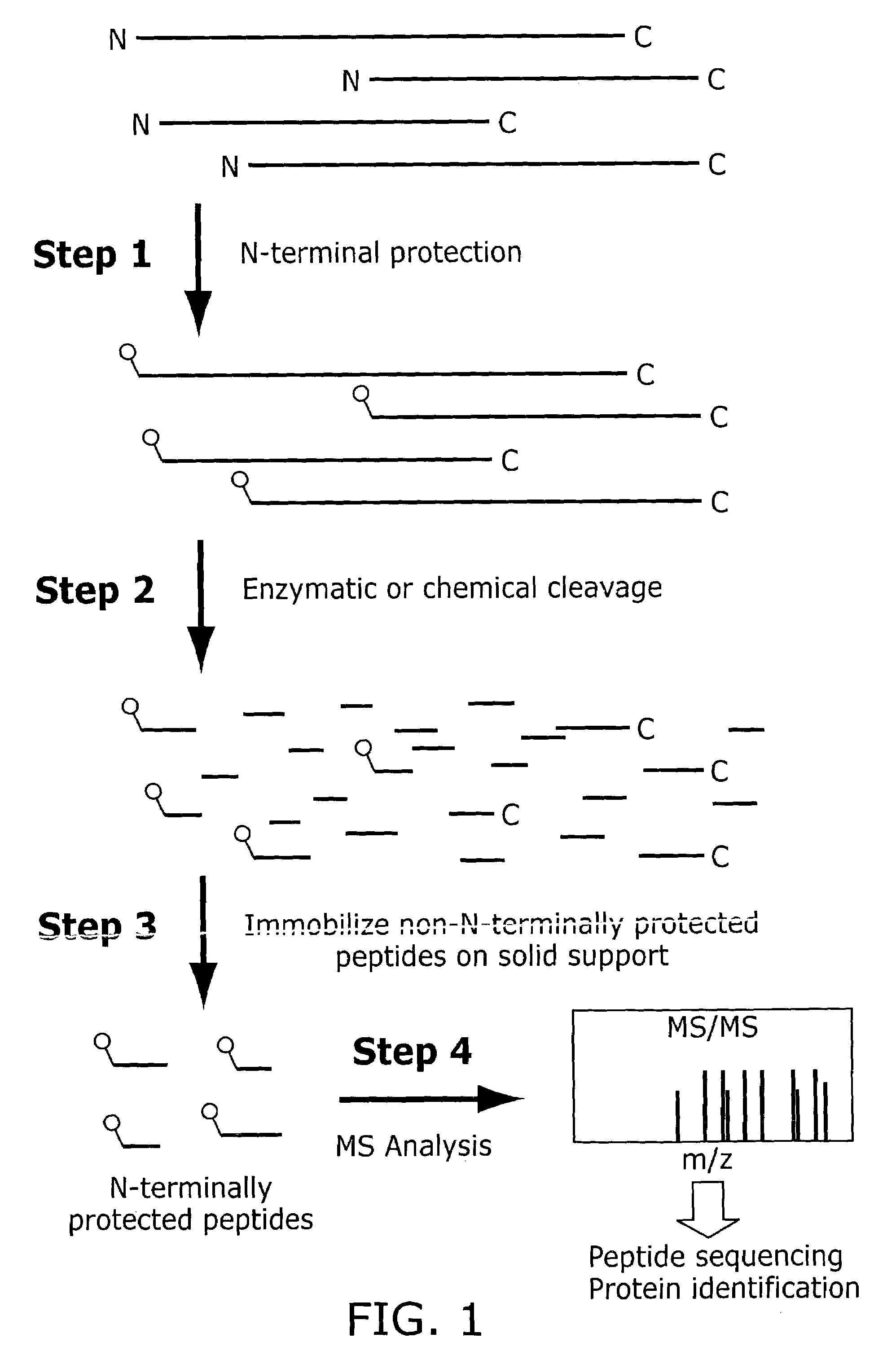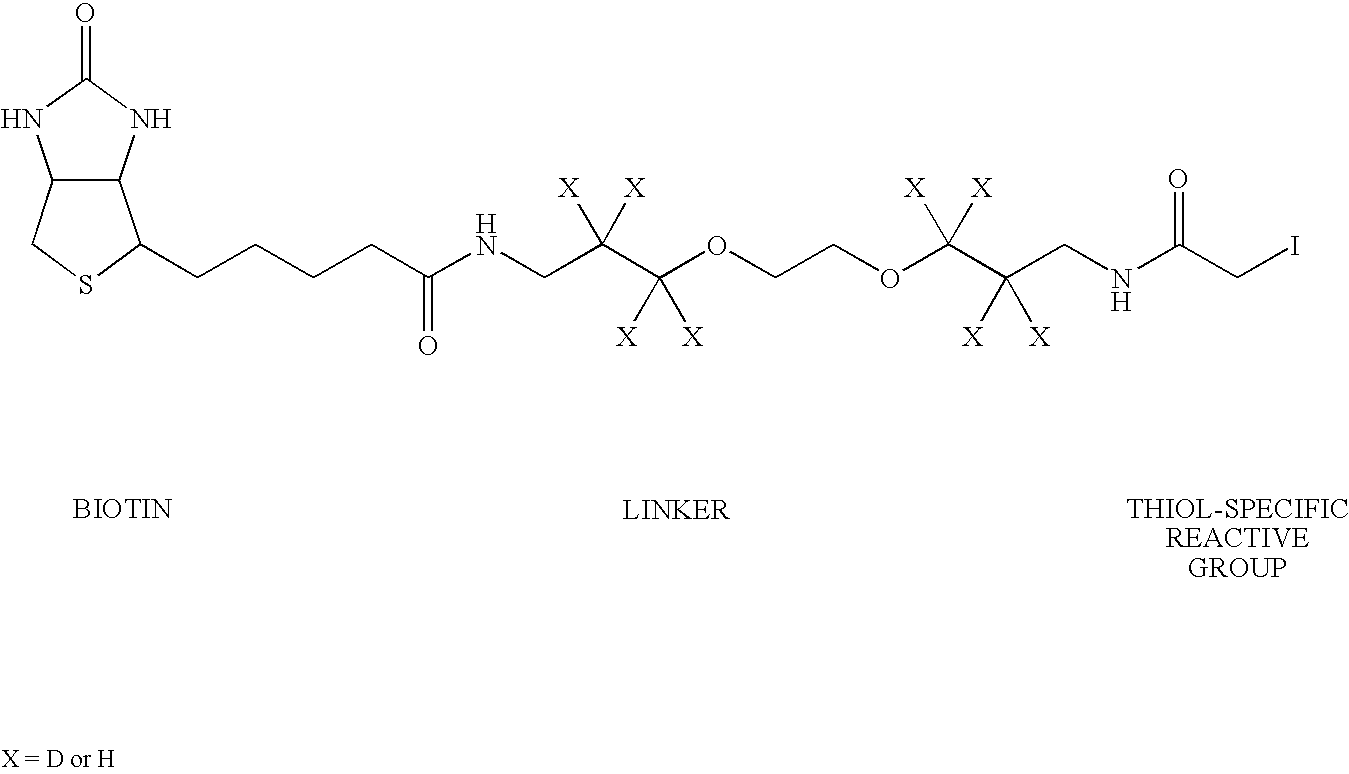Gel Electrophoresis in Structural and Functional Proteomics
JUL 1, 20259 MIN READ
Generate Your Research Report Instantly with AI Agent
Patsnap Eureka helps you evaluate technical feasibility & market potential.
Gel Electrophoresis Evolution and Objectives
Gel electrophoresis has been a cornerstone technique in proteomics since its inception in the 1930s. Initially developed for the separation of proteins based on their size and charge, this method has undergone significant evolution to meet the growing demands of structural and functional proteomics. The journey of gel electrophoresis began with simple one-dimensional separations and has progressed to sophisticated two-dimensional techniques that offer higher resolution and greater analytical power.
The primary objective of gel electrophoresis in proteomics is to achieve high-resolution separation of complex protein mixtures, enabling researchers to study individual proteins' structures, functions, and interactions. Over the years, the technique has been refined to address various challenges in protein analysis, including the detection of low-abundance proteins, the resolution of proteins with similar molecular weights, and the analysis of post-translational modifications.
One of the most significant milestones in the evolution of gel electrophoresis was the development of two-dimensional gel electrophoresis (2-DE) in the 1970s. This technique combines isoelectric focusing (IEF) in the first dimension with sodium dodecyl sulfate-polyacrylamide gel electrophoresis (SDS-PAGE) in the second dimension, allowing for the separation of proteins based on both their isoelectric point and molecular weight. 2-DE has since become a powerful tool for comparative proteomics and biomarker discovery.
Recent advancements in gel electrophoresis technology have focused on improving sensitivity, reproducibility, and throughput. The introduction of fluorescent labeling techniques, such as difference gel electrophoresis (DIGE), has enhanced the ability to detect and quantify proteins across multiple samples simultaneously. Additionally, the development of large-format gels and automated spot-picking systems has increased the capacity for high-throughput analysis.
The current objectives of gel electrophoresis research in proteomics are multifaceted. Researchers aim to further improve the resolution and sensitivity of the technique, particularly for the analysis of low-abundance proteins and post-translational modifications. There is also a push towards developing more standardized protocols to enhance reproducibility across laboratories and enable more robust comparative studies.
Another key objective is the integration of gel electrophoresis with other analytical techniques, such as mass spectrometry, to provide more comprehensive protein characterization. This integration aims to combine the high-resolution separation capabilities of gel electrophoresis with the precise identification and quantification abilities of mass spectrometry.
Furthermore, there is a growing interest in developing gel-free alternatives that can overcome some of the limitations of traditional gel electrophoresis, such as the difficulty in analyzing hydrophobic or extremely basic proteins. However, gel electrophoresis remains a vital tool in proteomics due to its ability to provide a visual representation of the proteome and its compatibility with downstream analysis techniques.
The primary objective of gel electrophoresis in proteomics is to achieve high-resolution separation of complex protein mixtures, enabling researchers to study individual proteins' structures, functions, and interactions. Over the years, the technique has been refined to address various challenges in protein analysis, including the detection of low-abundance proteins, the resolution of proteins with similar molecular weights, and the analysis of post-translational modifications.
One of the most significant milestones in the evolution of gel electrophoresis was the development of two-dimensional gel electrophoresis (2-DE) in the 1970s. This technique combines isoelectric focusing (IEF) in the first dimension with sodium dodecyl sulfate-polyacrylamide gel electrophoresis (SDS-PAGE) in the second dimension, allowing for the separation of proteins based on both their isoelectric point and molecular weight. 2-DE has since become a powerful tool for comparative proteomics and biomarker discovery.
Recent advancements in gel electrophoresis technology have focused on improving sensitivity, reproducibility, and throughput. The introduction of fluorescent labeling techniques, such as difference gel electrophoresis (DIGE), has enhanced the ability to detect and quantify proteins across multiple samples simultaneously. Additionally, the development of large-format gels and automated spot-picking systems has increased the capacity for high-throughput analysis.
The current objectives of gel electrophoresis research in proteomics are multifaceted. Researchers aim to further improve the resolution and sensitivity of the technique, particularly for the analysis of low-abundance proteins and post-translational modifications. There is also a push towards developing more standardized protocols to enhance reproducibility across laboratories and enable more robust comparative studies.
Another key objective is the integration of gel electrophoresis with other analytical techniques, such as mass spectrometry, to provide more comprehensive protein characterization. This integration aims to combine the high-resolution separation capabilities of gel electrophoresis with the precise identification and quantification abilities of mass spectrometry.
Furthermore, there is a growing interest in developing gel-free alternatives that can overcome some of the limitations of traditional gel electrophoresis, such as the difficulty in analyzing hydrophobic or extremely basic proteins. However, gel electrophoresis remains a vital tool in proteomics due to its ability to provide a visual representation of the proteome and its compatibility with downstream analysis techniques.
Proteomics Market Analysis
The proteomics market has been experiencing significant growth in recent years, driven by advancements in technology and increasing applications in various fields of life sciences. The global proteomics market size was valued at approximately $32.5 billion in 2021 and is projected to reach $74.3 billion by 2028, growing at a CAGR of 12.6% during the forecast period.
Gel electrophoresis, particularly in the context of structural and functional proteomics, plays a crucial role in this expanding market. As a fundamental technique for protein separation and analysis, gel electrophoresis contributes significantly to the overall proteomics market. The demand for gel electrophoresis in proteomics research is driven by its ability to provide high-resolution protein separation, which is essential for studying protein structures, functions, and interactions.
The market for gel electrophoresis in proteomics can be segmented based on product type, including instruments, reagents, and software. Among these, reagents hold the largest market share due to their recurring consumption in research laboratories. The instruments segment, which includes electrophoresis systems and imaging devices, is expected to grow at a faster rate owing to technological advancements in automation and high-throughput capabilities.
Geographically, North America dominates the proteomics market, followed by Europe and Asia-Pacific. The United States, in particular, leads in terms of market share due to substantial investments in proteomics research and the presence of major pharmaceutical and biotechnology companies. However, the Asia-Pacific region is anticipated to witness the highest growth rate in the coming years, driven by increasing research activities and government initiatives to promote life sciences research.
Key factors driving the growth of the proteomics market include the rising prevalence of chronic diseases, increasing investments in pharmaceutical R&D, and growing applications of proteomics in personalized medicine. Additionally, the integration of artificial intelligence and machine learning in proteomics data analysis is expected to create new opportunities for market expansion.
However, the market faces challenges such as the high cost of proteomics instruments and the complexity of data interpretation. These factors may hinder market growth, particularly in emerging economies. Nevertheless, ongoing technological advancements and collaborations between academic institutions and industry players are expected to address these challenges and drive further market growth.
In conclusion, the proteomics market, including gel electrophoresis applications in structural and functional proteomics, presents significant opportunities for growth and innovation. As research in this field continues to expand, the demand for advanced proteomics technologies and solutions is expected to rise, further propelling market growth in the coming years.
Gel electrophoresis, particularly in the context of structural and functional proteomics, plays a crucial role in this expanding market. As a fundamental technique for protein separation and analysis, gel electrophoresis contributes significantly to the overall proteomics market. The demand for gel electrophoresis in proteomics research is driven by its ability to provide high-resolution protein separation, which is essential for studying protein structures, functions, and interactions.
The market for gel electrophoresis in proteomics can be segmented based on product type, including instruments, reagents, and software. Among these, reagents hold the largest market share due to their recurring consumption in research laboratories. The instruments segment, which includes electrophoresis systems and imaging devices, is expected to grow at a faster rate owing to technological advancements in automation and high-throughput capabilities.
Geographically, North America dominates the proteomics market, followed by Europe and Asia-Pacific. The United States, in particular, leads in terms of market share due to substantial investments in proteomics research and the presence of major pharmaceutical and biotechnology companies. However, the Asia-Pacific region is anticipated to witness the highest growth rate in the coming years, driven by increasing research activities and government initiatives to promote life sciences research.
Key factors driving the growth of the proteomics market include the rising prevalence of chronic diseases, increasing investments in pharmaceutical R&D, and growing applications of proteomics in personalized medicine. Additionally, the integration of artificial intelligence and machine learning in proteomics data analysis is expected to create new opportunities for market expansion.
However, the market faces challenges such as the high cost of proteomics instruments and the complexity of data interpretation. These factors may hinder market growth, particularly in emerging economies. Nevertheless, ongoing technological advancements and collaborations between academic institutions and industry players are expected to address these challenges and drive further market growth.
In conclusion, the proteomics market, including gel electrophoresis applications in structural and functional proteomics, presents significant opportunities for growth and innovation. As research in this field continues to expand, the demand for advanced proteomics technologies and solutions is expected to rise, further propelling market growth in the coming years.
Gel Electrophoresis Challenges in Proteomics
Gel electrophoresis, a cornerstone technique in proteomics, faces several significant challenges in the context of structural and functional analysis. One of the primary issues is the limited resolution and separation capacity, particularly for complex protein mixtures. As proteomes often contain thousands of proteins with diverse physicochemical properties, conventional gel-based methods struggle to provide comprehensive coverage and distinction between closely related proteins.
Another major challenge is the difficulty in detecting and quantifying low-abundance proteins. Many proteins of biological interest, such as signaling molecules and regulatory factors, are present in cells at very low concentrations. Gel electrophoresis techniques often lack the sensitivity to reliably capture these proteins, leading to potential gaps in proteomic analyses and incomplete understanding of cellular processes.
The issue of protein solubility and compatibility with gel-based systems poses additional hurdles. Hydrophobic proteins, particularly membrane proteins, are notoriously difficult to solubilize and separate using traditional gel electrophoresis methods. This limitation significantly hampers the study of important cellular components and their interactions, potentially skewing our understanding of proteome dynamics.
Post-translational modifications (PTMs) present another layer of complexity. While gel electrophoresis can separate proteins based on size and charge, it often fails to adequately resolve proteins with subtle PTM differences. This shortcoming impacts the ability to study protein regulation and function, as PTMs play crucial roles in modulating protein activity and interactions.
The time-consuming nature of gel electrophoresis techniques is a practical challenge in high-throughput proteomics studies. The lengthy processes of sample preparation, gel running, and subsequent protein extraction or analysis can limit the number of samples that can be processed, potentially slowing down research progress and reducing experimental throughput.
Reproducibility and standardization across laboratories remain ongoing concerns. Variations in gel preparation, running conditions, and staining methods can lead to inconsistencies in results, making it difficult to compare data between different experiments or research groups. This challenge underscores the need for robust protocols and quality control measures in gel-based proteomics.
Lastly, the integration of gel electrophoresis data with other proteomics techniques and bioinformatics tools presents a significant challenge. As the field moves towards more comprehensive and systems-level analyses, there is a growing need for seamless data integration and interpretation across multiple analytical platforms. Overcoming these challenges is crucial for advancing the field of structural and functional proteomics and unlocking the full potential of gel electrophoresis in protein research.
Another major challenge is the difficulty in detecting and quantifying low-abundance proteins. Many proteins of biological interest, such as signaling molecules and regulatory factors, are present in cells at very low concentrations. Gel electrophoresis techniques often lack the sensitivity to reliably capture these proteins, leading to potential gaps in proteomic analyses and incomplete understanding of cellular processes.
The issue of protein solubility and compatibility with gel-based systems poses additional hurdles. Hydrophobic proteins, particularly membrane proteins, are notoriously difficult to solubilize and separate using traditional gel electrophoresis methods. This limitation significantly hampers the study of important cellular components and their interactions, potentially skewing our understanding of proteome dynamics.
Post-translational modifications (PTMs) present another layer of complexity. While gel electrophoresis can separate proteins based on size and charge, it often fails to adequately resolve proteins with subtle PTM differences. This shortcoming impacts the ability to study protein regulation and function, as PTMs play crucial roles in modulating protein activity and interactions.
The time-consuming nature of gel electrophoresis techniques is a practical challenge in high-throughput proteomics studies. The lengthy processes of sample preparation, gel running, and subsequent protein extraction or analysis can limit the number of samples that can be processed, potentially slowing down research progress and reducing experimental throughput.
Reproducibility and standardization across laboratories remain ongoing concerns. Variations in gel preparation, running conditions, and staining methods can lead to inconsistencies in results, making it difficult to compare data between different experiments or research groups. This challenge underscores the need for robust protocols and quality control measures in gel-based proteomics.
Lastly, the integration of gel electrophoresis data with other proteomics techniques and bioinformatics tools presents a significant challenge. As the field moves towards more comprehensive and systems-level analyses, there is a growing need for seamless data integration and interpretation across multiple analytical platforms. Overcoming these challenges is crucial for advancing the field of structural and functional proteomics and unlocking the full potential of gel electrophoresis in protein research.
Current Gel Electrophoresis Techniques
01 Gel composition and preparation
Various gel compositions and preparation methods are used in gel electrophoresis. These include specific formulations of polyacrylamide gels, agarose gels, and other polymer-based gels. The composition and preparation of these gels are crucial for achieving optimal separation of biomolecules based on their size and charge.- Gel composition and preparation: Various gel compositions and preparation methods are used in gel electrophoresis. These include the use of specific polymers, cross-linking agents, and buffer solutions to create gels with desired properties for separation of molecules. The composition and preparation of the gel can significantly affect the resolution and efficiency of the electrophoresis process.
- Electrophoresis apparatus design: Innovations in electrophoresis apparatus design focus on improving separation efficiency, sample loading, and detection capabilities. These designs may include modifications to electrode configurations, buffer chambers, and cooling systems to enhance performance and reproducibility of gel electrophoresis experiments.
- Detection and imaging techniques: Advanced detection and imaging techniques are developed to visualize and analyze separated molecules in gel electrophoresis. These may include fluorescence-based detection, chemiluminescence, or other optical methods to enhance sensitivity and quantification of results. Some techniques also focus on real-time monitoring of the separation process.
- Sample preparation and loading: Improved methods for sample preparation and loading in gel electrophoresis aim to increase resolution and reproducibility. These innovations may include novel sample buffers, loading techniques, or pre-treatment processes to enhance the separation of complex mixtures of molecules.
- Specialized applications and modifications: Gel electrophoresis techniques are modified for specialized applications in various fields such as proteomics, genomics, and forensics. These modifications may include the use of specific gel types, running conditions, or post-electrophoresis treatments to address particular analytical challenges or improve the separation of specific types of molecules.
02 Electrophoresis apparatus design
Innovations in electrophoresis apparatus design focus on improving separation efficiency, resolution, and ease of use. These designs may include novel electrode configurations, buffer systems, and sample loading mechanisms. Some apparatuses are designed for specific applications or to handle multiple samples simultaneously.Expand Specific Solutions03 Detection and analysis methods
Various detection and analysis methods are employed in gel electrophoresis to visualize and quantify separated biomolecules. These may include fluorescence-based detection, staining techniques, and image analysis software. Some methods focus on improving sensitivity and accuracy in detecting specific molecules or sequences.Expand Specific Solutions04 Microfluidic and miniaturized systems
Miniaturized and microfluidic gel electrophoresis systems are developed to reduce sample volume requirements, increase throughput, and improve portability. These systems often integrate multiple functions, such as sample preparation, separation, and detection, into a single device.Expand Specific Solutions05 Specialized applications and modifications
Specialized gel electrophoresis techniques and modifications are developed for specific applications, such as DNA sequencing, protein analysis, or clinical diagnostics. These may involve unique gel formulations, running conditions, or sample preparation methods tailored to the specific biomolecules or research questions being addressed.Expand Specific Solutions
Key Players in Proteomics Research Tools
The research on gel electrophoresis in structural and functional proteomics is in a mature stage, with a well-established market and significant industry presence. The global proteomics market, which includes gel electrophoresis techniques, is projected to reach substantial size in the coming years. Major players like Agilent Technologies, Bio-Rad Laboratories, and Thermo Fisher Scientific have developed advanced gel electrophoresis systems and related products, indicating a high level of technological maturity. Academic institutions such as Oregon Health & Science University and Case Western Reserve University contribute to ongoing research and innovation in this field, while companies like NeoGenomics and Expedeon offer specialized services and reagents, further demonstrating the technology's widespread adoption and commercial viability.
Agilent Technologies, Inc.
Technical Solution: Agilent Technologies has developed advanced gel electrophoresis systems for structural and functional proteomics research. Their 2100 Bioanalyzer system utilizes microfluidic chip-based technology for high-resolution protein separation and analysis[1]. This platform integrates sample loading, separation, staining, destaining, detection, and data analysis into a single automated process. The system employs lab-on-a-chip technology to perform electrophoresis on multiple samples simultaneously, significantly reducing analysis time and sample volume requirements[2]. Agilent has also introduced the 4150 TapeStation system, which uses pre-cast gel cassettes (ScreenTapes) for rapid and automated protein separation, offering high reproducibility and minimal hands-on time[3].
Strengths: High automation, reduced sample volumes, and faster analysis times. Weaknesses: Higher initial investment cost and potential limitations in customization for specialized applications.
Bio-Rad Laboratories, Inc.
Technical Solution: Bio-Rad Laboratories has pioneered several innovations in gel electrophoresis for proteomics research. Their PROTEAN i12 IEF System employs immobilized pH gradient (IPG) technology for high-resolution protein separation based on isoelectric points[4]. This system allows for the separation of complex protein mixtures with exceptional reproducibility. Bio-Rad has also developed the V3 Western Workflow, which integrates stain-free gel technology with their ChemiDoc imaging systems for rapid protein detection and quantification without the need for traditional staining methods[5]. Additionally, their Mini-PROTEAN Tetra Vertical Electrophoresis Cell offers versatility for both hand-cast and precast gels, supporting various gel thicknesses and compatibility with different buffer systems[6].
Strengths: Wide range of compatible products, from sample preparation to imaging, offering complete workflow solutions. Weaknesses: Some systems may have a steeper learning curve for novice users.
Innovations in 2D Gel Electrophoresis
Automated two-dimensional gel electrophoresis
PatentInactiveUS20070199821A1
Innovation
- An automated, integrated macro and microfluidic platform that robotically transfers samples between cartridges for isoelectric focusing and size separation, reducing the need for manual handling and minimizing sample transfer steps.
Method of identifying peptides in a proteomic sample
PatentInactiveUS7422865B2
Innovation
- The method involves protecting protein N- or C-termini with suitable agents, cleaving to produce terminal peptides, and separating these peptides from non-terminal peptides using solid supports, allowing for the reduction of sample complexity to a single peptide per protein, which can be characterized using mass spectrometry and database search systems.
Bioinformatics in Proteomic Data Analysis
Bioinformatics plays a crucial role in the analysis of proteomic data generated through gel electrophoresis techniques in structural and functional proteomics. As the field of proteomics continues to evolve, the integration of advanced bioinformatics tools and algorithms has become essential for extracting meaningful insights from complex proteomic datasets.
One of the primary applications of bioinformatics in proteomic data analysis is the identification and characterization of proteins separated by gel electrophoresis. Sophisticated software packages have been developed to analyze gel images, detect protein spots, and quantify their intensities. These tools employ various image processing algorithms to enhance spot detection accuracy and reduce background noise, enabling researchers to obtain reliable protein expression profiles.
Database searching is another critical aspect of bioinformatics in proteomics. After protein spots are identified, mass spectrometry data is often used to determine the protein's identity. Bioinformatics tools facilitate the comparison of experimental mass spectra with theoretical spectra derived from protein sequence databases, allowing for rapid and accurate protein identification.
Statistical analysis and data mining techniques are employed to extract meaningful patterns and relationships from large-scale proteomic datasets. These methods help researchers identify differentially expressed proteins, discover protein-protein interactions, and elucidate functional pathways. Machine learning algorithms are increasingly being applied to predict protein functions and interactions based on gel electrophoresis data.
Visualization tools play a vital role in presenting complex proteomic data in an easily interpretable format. Heat maps, protein interaction networks, and pathway diagrams are commonly used to represent protein expression patterns and functional relationships. These visual representations aid in the interpretation of large-scale proteomic experiments and facilitate the communication of results to the scientific community.
Integration of proteomic data with other omics datasets, such as genomics and transcriptomics, is an emerging trend in bioinformatics. This multi-omics approach provides a more comprehensive understanding of biological systems and helps researchers uncover novel insights into cellular processes and disease mechanisms.
As the volume and complexity of proteomic data continue to grow, cloud computing and distributed computing solutions are becoming increasingly important. These technologies enable researchers to process and analyze large-scale proteomic datasets more efficiently, overcoming the computational limitations of traditional desktop systems.
One of the primary applications of bioinformatics in proteomic data analysis is the identification and characterization of proteins separated by gel electrophoresis. Sophisticated software packages have been developed to analyze gel images, detect protein spots, and quantify their intensities. These tools employ various image processing algorithms to enhance spot detection accuracy and reduce background noise, enabling researchers to obtain reliable protein expression profiles.
Database searching is another critical aspect of bioinformatics in proteomics. After protein spots are identified, mass spectrometry data is often used to determine the protein's identity. Bioinformatics tools facilitate the comparison of experimental mass spectra with theoretical spectra derived from protein sequence databases, allowing for rapid and accurate protein identification.
Statistical analysis and data mining techniques are employed to extract meaningful patterns and relationships from large-scale proteomic datasets. These methods help researchers identify differentially expressed proteins, discover protein-protein interactions, and elucidate functional pathways. Machine learning algorithms are increasingly being applied to predict protein functions and interactions based on gel electrophoresis data.
Visualization tools play a vital role in presenting complex proteomic data in an easily interpretable format. Heat maps, protein interaction networks, and pathway diagrams are commonly used to represent protein expression patterns and functional relationships. These visual representations aid in the interpretation of large-scale proteomic experiments and facilitate the communication of results to the scientific community.
Integration of proteomic data with other omics datasets, such as genomics and transcriptomics, is an emerging trend in bioinformatics. This multi-omics approach provides a more comprehensive understanding of biological systems and helps researchers uncover novel insights into cellular processes and disease mechanisms.
As the volume and complexity of proteomic data continue to grow, cloud computing and distributed computing solutions are becoming increasingly important. These technologies enable researchers to process and analyze large-scale proteomic datasets more efficiently, overcoming the computational limitations of traditional desktop systems.
Ethical Considerations in Proteomics Research
Ethical considerations in proteomics research are of paramount importance as this field continues to advance rapidly. The use of gel electrophoresis in structural and functional proteomics raises several ethical concerns that must be carefully addressed to ensure responsible scientific practice.
One primary ethical consideration is the sourcing and handling of biological samples used in proteomics studies. Researchers must obtain informed consent from individuals providing samples, ensuring that participants fully understand the nature of the research and potential implications. This is particularly crucial when dealing with human tissue samples or genetic material. Additionally, proper protocols for sample anonymization and data protection must be implemented to safeguard participants' privacy and confidentiality.
The potential for misuse or misinterpretation of proteomics data is another significant ethical concern. As gel electrophoresis techniques become more sophisticated, the ability to identify and characterize proteins with high precision increases. This raises questions about the potential for unintended discoveries, such as identifying genetic predispositions to diseases or other sensitive information. Researchers must establish clear guidelines for handling and reporting such findings, especially when they are incidental to the primary research objectives.
Equity and access to proteomics technologies and research outcomes are also important ethical considerations. As gel electrophoresis and other proteomics techniques become more advanced, there is a risk of creating or exacerbating disparities in healthcare and scientific knowledge. Efforts should be made to ensure that the benefits of proteomics research are accessible to diverse populations and that research priorities reflect global health needs rather than solely commercial interests.
The ethical implications of using animal models in proteomics research must also be carefully considered. While animal studies can provide valuable insights, researchers must adhere to strict ethical guidelines for animal welfare, minimizing suffering and using alternatives whenever possible. This includes implementing the 3Rs principle: Replacement, Reduction, and Refinement of animal experiments.
Lastly, the responsible communication of proteomics research findings is crucial. Scientists must be transparent about their methodologies, including any limitations or potential biases in gel electrophoresis techniques. They should also be cautious in presenting and interpreting results, avoiding overstatement or sensationalism that could lead to public misunderstanding or unwarranted concerns.
One primary ethical consideration is the sourcing and handling of biological samples used in proteomics studies. Researchers must obtain informed consent from individuals providing samples, ensuring that participants fully understand the nature of the research and potential implications. This is particularly crucial when dealing with human tissue samples or genetic material. Additionally, proper protocols for sample anonymization and data protection must be implemented to safeguard participants' privacy and confidentiality.
The potential for misuse or misinterpretation of proteomics data is another significant ethical concern. As gel electrophoresis techniques become more sophisticated, the ability to identify and characterize proteins with high precision increases. This raises questions about the potential for unintended discoveries, such as identifying genetic predispositions to diseases or other sensitive information. Researchers must establish clear guidelines for handling and reporting such findings, especially when they are incidental to the primary research objectives.
Equity and access to proteomics technologies and research outcomes are also important ethical considerations. As gel electrophoresis and other proteomics techniques become more advanced, there is a risk of creating or exacerbating disparities in healthcare and scientific knowledge. Efforts should be made to ensure that the benefits of proteomics research are accessible to diverse populations and that research priorities reflect global health needs rather than solely commercial interests.
The ethical implications of using animal models in proteomics research must also be carefully considered. While animal studies can provide valuable insights, researchers must adhere to strict ethical guidelines for animal welfare, minimizing suffering and using alternatives whenever possible. This includes implementing the 3Rs principle: Replacement, Reduction, and Refinement of animal experiments.
Lastly, the responsible communication of proteomics research findings is crucial. Scientists must be transparent about their methodologies, including any limitations or potential biases in gel electrophoresis techniques. They should also be cautious in presenting and interpreting results, avoiding overstatement or sensationalism that could lead to public misunderstanding or unwarranted concerns.
Unlock deeper insights with Patsnap Eureka Quick Research — get a full tech report to explore trends and direct your research. Try now!
Generate Your Research Report Instantly with AI Agent
Supercharge your innovation with Patsnap Eureka AI Agent Platform!
